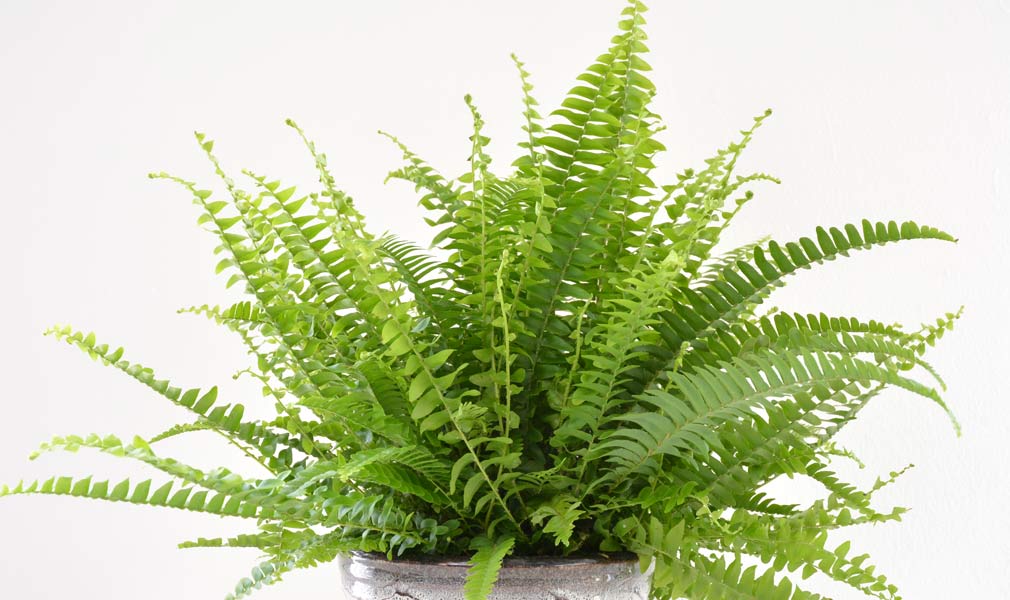How To Grow And Care For A Boston Fern Plant
If you're looking for a plant that's easy to care for and can add a touch of greenery to any room, you might want to consider the Boston fern. This lush and vibrant plant is known for its feathery, bright green fronds, and is a popular choice for many indoor gardeners.

Plant Attributes
The Boston fern, also known as Nephrolepis exaltata, is a perennial plant that is native to tropical regions of the Americas. When grown indoors, it can reach a height of up to three feet and a spread of up to four feet, making it an impressive addition to any room.
One of the reasons why the Boston fern is so popular is that it is relatively easy to care for, even for beginners. It prefers bright, indirect light, and thrives in humid environments. The plant also does well in regular potting soil, and prefers to be kept consistently moist.
Plant Care
Proper care is essential if you want to keep your Boston fern looking healthy and vibrant. Here are a few tips:
- Water your plant regularly, making sure the soil is consistently moist (but not waterlogged).
- Place your fern in a bright, humid location, but avoid direct sunlight.
- Feed your fern with a balanced, water-soluble fertilizer every few weeks during the growing season.
- Remove any yellow or dead fronds to encourage new growth.
Pruning
Pruning is an important part of Boston fern care, as it helps to promote new growth and keep the plant looking tidy. Here are some tips for pruning your fern:
- Remove any yellow or dead fronds as soon as you notice them.
- Tidy up the plant by trimming away any fronds that are growing in an awkward or unattractive way.
- If your fern is getting too big for its pot or becoming overcrowded, you can divide it into smaller plants and repot them separately.
Propagation
If you want to propagate your Boston fern, it's best to do so in the spring or summer, when the plant is actively growing. Here are some tips:
- Cut a section of the plant that includes both roots and several fronds.
- Plant the cutting in a pot filled with moist potting soil, and cover it with plastic wrap to create a mini-greenhouse.
- Keep the cutting in a warm, bright area, and mist it regularly to maintain humidity.
- After a few weeks, the cutting should take root and start to grow.
Potting & Repotting
When potting or repotting your Boston fern, it's important to choose a container that is large enough to accommodate the plant's roots, but not so large that it feels overwhelmed. Here are some tips:
- Choose a pot that is slightly larger than the current one, and make sure it has drainage holes to prevent waterlogging.
- Fill the pot with a high-quality potting mix that is rich in organic matter.
- Carefully remove the fern from its old pot, being careful not to damage the roots.
- Place the fern in the new pot, and add soil around the roots, gently firming it down as you go.
- Water the plant thoroughly, and continue to water it regularly until it becomes established in its new pot.
Common Pests & Plant Disease
While Boston ferns are relatively easy to care for, they can be susceptible to a few common pests and diseases. Here are some issues to look out for:
- Mites and mealybugs can be a problem, especially if the plant is kept in a dry, hot environment. Check the plant regularly for signs of infestation, such as webbing or white, powdery residue.
- Root rot can occur if the plant is overwatered or if the soil does not have adequate drainage. Signs of root rot include yellowing leaves and a damp, unpleasant smell.
- Fungal diseases such as leaf spot and powdery mildew can also affect Boston ferns, especially if the plant is kept in a humid or poorly ventilated area.
Common Problems
Despite their reputation as an easy-to-care for plant, Boston ferns can sometimes experience a few issues. Here are some common problems and how to deal with them:
- Dull, brown fronds can be a sign that the plant is not getting enough light. Try moving it to a brighter location.
- If the fronds are turning yellow or brown and falling off, it could be a sign that the plant is being overwatered. Check the soil moisture level, and adjust your watering schedule if necessary.
- If the plant is becoming too large for its pot or becoming overcrowded, it may be time to divide it and repot it.
Overall, the Boston fern is a beautiful and easy-to-care-for plant that can add a touch of greenery to any room. Whether you're an experienced indoor gardener or a beginner, this plant is a great choice that is sure to thrive with a little bit of care and attention.




Post a Comment for "How To Grow And Care For A Boston Fern Plant"